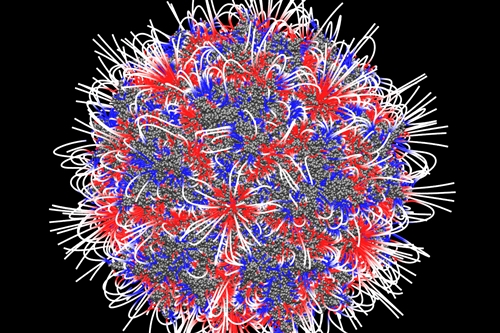28 July 2016. Researchers devised a treatment for a cancer-related muscle wasting disease using gene transfers that in lab mice block cell signals promoting muscle degradation. The team from the Baker IDI Heart and Diabetes Institute in Melbourne, Australia and Washington State University in Pullman, published its findings last week in the journal Science Translational Medicine (paid subscription required).
A research team from the lab of physiologist Paul Gregorevic at the Baker Institute, with colleagues from other institutions in Australia and the U.S., are seeking better treatment options for cancer cachexia, a disorder where cancer in advanced stages encourages deterioration of muscles and weight loss, leading first to fatigue but later to more serious consequences, including heart muscle degradation and death. Some 1.3 million people in the U.S. have cancer cachexia, responsible for 20 percent of all cancer deaths.
Treatments for this and related muscle disorders up to now returned at best mixed results. The degradation of muscle is traced to proteins known as ActRIIB ligands, which can be controlled by another protein, myostatin, responsible for growth and development of skeletal tissues in the body. Preclinical studies and clinical trials with myostatin, however, show the therapy is associated with unwanted adverse effects, including thickening heart muscles and heart failure.
Gregorevic and colleagues are taking a different approach that more precisely targets ActRIIB ligand signals, without the adverse side effects. Their technique increases the output of proteins, expressed by a gene known as Smad7, that prevent only the effects of harmful ActRIIB signals. Proteins expressed by the Smad7 gene block the actions of other proteins in the same genetic family that result from ActRIIB signals.
The team first adjusted the properties of Smad7 genes, then found a way to deliver it. Researchers engineered a form of the Smad7 gene that produces abundant proteins addressing cardiac and skeletal muscle tissue affected by cancer cachexia. To deliver the Smad7 genes, the team used adeno-associated viruses, benign and naturally occurring microbes that can infect cells, but do not integrate with the cell’s genome or cause disease, and generate a mild immune response.
In tests with lab mice, the team delivered Smad7 genes with adeno-associated viruses, which confirmed that proteins from the over-expressing genes block activation of related muscle-wasting proteins from ActRIIB signals. In further tests, mice were induced with colon cancer, and viral-delivered Smad7 genes were shown to prevent muscle wasting in those mice, as well as preserve their muscle mass. No harm was detected to other organs in the mice.
The technology in this study is in early stages of commercialization. Baker Institute and Washington State University filed a patent application for the process. In addition, co-author and animal sciences professor Dan Rodgers at Washington State, who lost his father to cachexia, started the company AAVogen Inc. in 2015 to apply the technology to treatments for a number of muscle diseases.
“I formed this company for one purpose,” says Rodgers in a university statement, “to move the science into society, to see it applied. Now we have a company with the potential to save a lot of lives.”
Read more:
- Stem Cells, Gene Therapy Produce Replacement Joint Cartilage
- RNA Technology Licensed for Cystic Fibrosis Therapy
- RNA Technology Allows for Fast Vaccine Development
- Pricing Factors Proposed for Gene Therapies
- Biogen, UPenn Partner in $2B Gene Therapy Research Deal
* * *


 RSS - Posts
RSS - Posts
You must be logged in to post a comment.